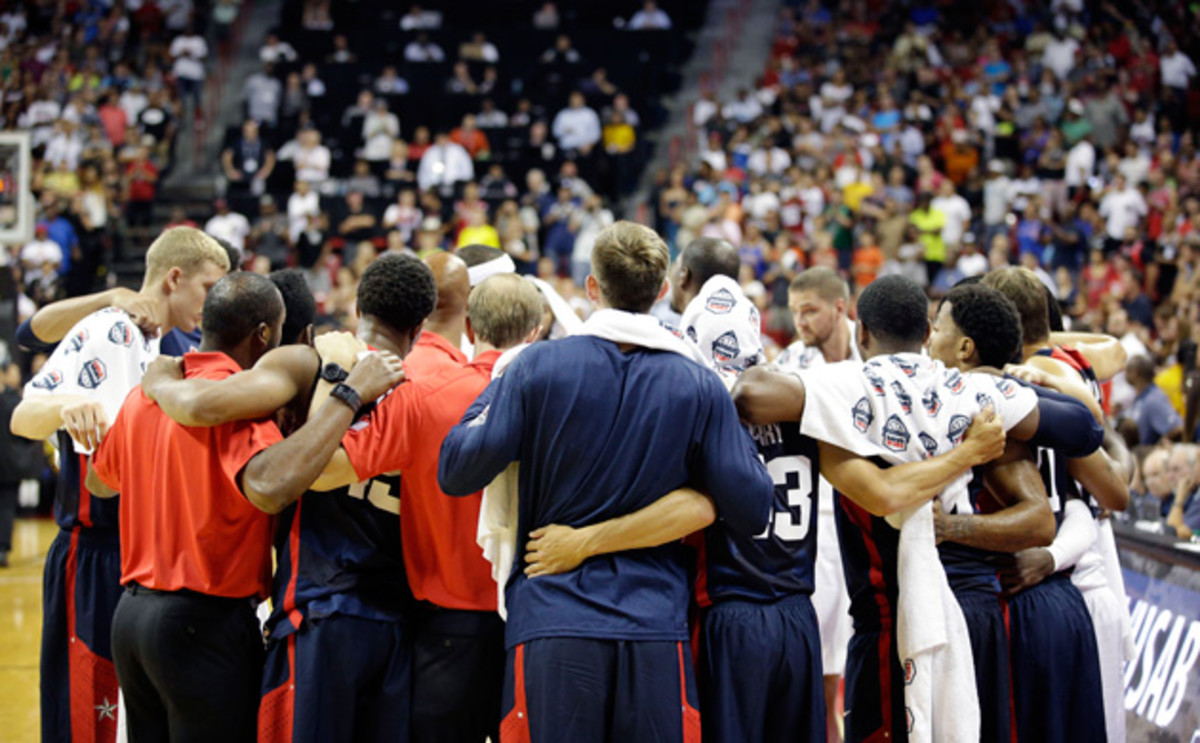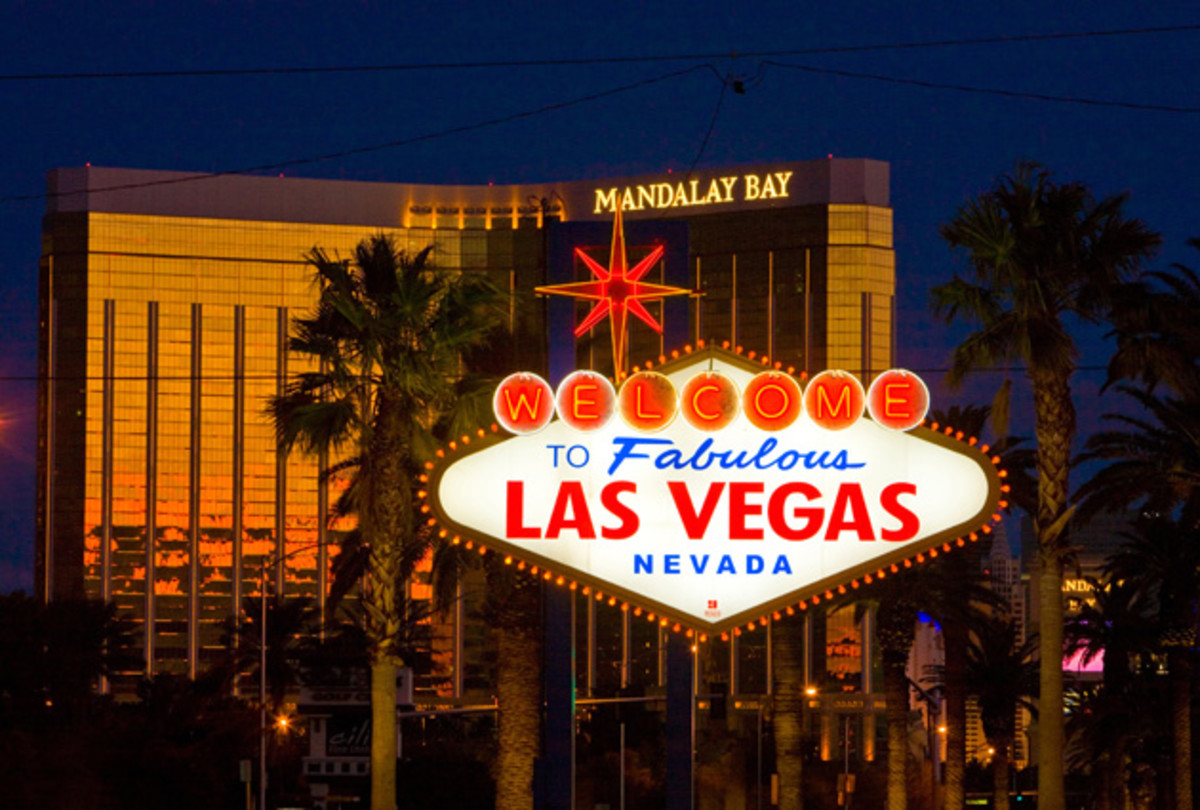Tim Grover: For the NBA, it shouldn't happen in Vegas

In the wake of the devastating injury suffered by the Indiana Pacers' Paul George, there undoubtedly will be much discussion over the next days and weeks about whether NBA superstars should be playing USA Basketball. You’ll hear about the position of the basket, about whether the risks outweigh the rewards, whether the IOC and FIBA have more control than the owners over NBA players, and about the undeniable fact that injury can happen anywhere, from a driveway hoop to the grandest arenas in the world.
I have no doubt that Paul George will do the work necessary to make a physical recovery. Bones heal. The typical schedule for an athlete to return from this kind of injury? Three to four months in a cast, walking without a limp at six months, running at nine months, agility drills at 10 months, plyometrics at 11 months, and a return to basketball activities at 12 months. Physical therapy can begin before he’s out of the cast to keep the core and other body parts strong. Each individual’s experience is different depending on the severity of the injury, but that the timetable laid out above is pretty much the one that Paul is facing in his physical recovery.
Mental recovery? The mind has its own timetable. Paul’s rate of progress and ultimate success will depend heavily on what he does from the neck up, not just from the neck down.
From my perspective, though, the more critical discussion centers on the role of USA Basketball and whether it provides the most effective and efficient way for NBA athletes to get the results they need from their essential summer workouts.
To me, it’s a short discussion. In my business—training elite competitors—there is no off-season. If you’re a professional athlete, you work at your craft year-round. And if you’re already among the best in the game, there’s no better way to improve than to work at the highest level against others who are also working at the highest level. You’re not going to improve playing against the guys at the local YMCA. Elite talent requires elite competition in order to keep getting better.

That’s why, for many years, the NBA’s best would spend summers in Chicago playing alongside Michael Jordan in our legendary pickup games. We’d have 30-50 guys on four courts, playing like it was Game 7 of the Finals, just for the chance to compete with or against the greatest player of all time. The competition was real, the work was intense and, yes, there were occasional injuries. But it was all about basketball. No fans, no sponsors, no cameras, no fancy uniforms, no travel. If the guys had a late night out or felt like they needed a day off, they could stay home the next day; no one to answer to, no scheduled events. You need a day to recover and take care of your body? No problem. Your body, your career, your decision. We’ll be here.
So I’m the last person who’s going to tell the greats that they shouldn’t play tough competitive ball in the summer. In fact, it should be a requirement, especially for the young players, who still have a lot to learn. I don’t believe that athletes should be saving themselves for the rigors of the regular season. At this level, the regular season lasts 365 days a year.
But I’m in the business of keeping athletes strong and healthy; my No.1 objective is prolonging careers and minimizing the risks of injury. So while I appreciate the benefits of the NBA’s best playing together over the summer, I do have an issue with the demands of USA Basketball on young players coming off an 82-game schedule plus the playoffs, from the relentless itinerary packed with appearances, sponsor events, media, travel, and other distractions, to the one hazard no one really talks about:
Vegas.
Believe me, I’m not blaming Las Vegas for breaking Paul George’s leg; injuries happen, and there isn’t always a singular reason you can point to and announce “AHA! That’s why!”
Without a doubt, Vegas is the greatest place in the world for a lot of things.
You know what it’s not great for? Taking care of your body.
What’s the No.1 requirement of an athlete who wants to stay healthy and reduce the risk of injury? Taking care of his body.
The end: How the greats attack longevity
Athletes need rest and recovery; a fatigued body is begging for injury. The muscles are weaker, reaction time is slower, coordination decreases… lethal ingredients for an athlete. Tell me how anyone—athlete, bus driver, librarian—goes to Vegas and has time for rest and recovery. Most people can’t even make it to the free breakfast buffet or find their socks. And these athletes are supposed to play competitive sports all day? Practices, scrimmages, games, special events, press conferences, photo shoots, aggressive workouts… followed by nights in a city that has no closing time. Lots of well-earned fun but little to no sleep. Fact: Fatigue causes injury.
I’m not talking about the NBA’s Summer League in Vegas, stocked with players who haven’t just played superstar minutes for eight months. Nor am I talking about players who train regularly in Vegas; when you’re there all the time, you learn how to manage the distractions. And I’m also not talking about veteran players who have spent years understanding how to take care of their bodies; they have the experience to know what they can and can’t do if they want to stay healthy and strong, whether they’re in Vegas or at home.

But this current 2014 USA Basketball roster is exceptionally young: after Kyle Korver (age 33) and Paul Millsap (age 29), Steph Curry, at age 26, is the third oldest. Everyone else on the team is 25 or younger. No Kobe or LeBron or Chris Paul, no Wade or Melo, none of the other veterans of recent years. You can put a crew of older vets in Vegas and have a reasonable expectation that they’ll act like they’ve been there before. Not necessarily the case with a team of U25 superstars.
I’ve been around USA Basketball for many years, since the original Dream Team in 1992. I get it. These are healthy young men having fun in a city they don’t get to visit during the NBA season. The fans love it, the sponsors love it, the media loves it. The players love it too. Until an injury occurs and the party is suddenly over.
And yes, I am aware that there’s never been an injury like Paul’s during the USA Basketball season, and there may never be one again. But why risk it? Athletic excellence and elite performance are incompatible with any environment and situation that puts off-the-court activities ahead of the athlete’s ability to rest his body, even when you’re dealing with the best athletes in the world. I believe the NBA understands this; let’s see if the league follows through with a proposal to extend the All-Star Break for an entire week, so its All-Stars can actually get a break.
I fully support the idea of our best players working and playing together to improve their skills; that’s the only way the best get better. But does that have to include getting on a plane to Senegal? Maybe it’s time we took a hard look at what’s best for the athletes, and not just for those who benefit as a result of their talent and effort.
Tim S. Grover is the CEO of ATTACK Athletics, world-renowned for his work with championship and Hall of Fame athletes. An international authority on sports performance and motivation, he is a keynote speaker for corporations and sports organizations, and the best-selling author Relentless: From Good to Great to Unstoppable and Jump Attack. Follow Tim @ATTACKATHLETICSon Twitter, and visit www.attackathletics.com for more.
